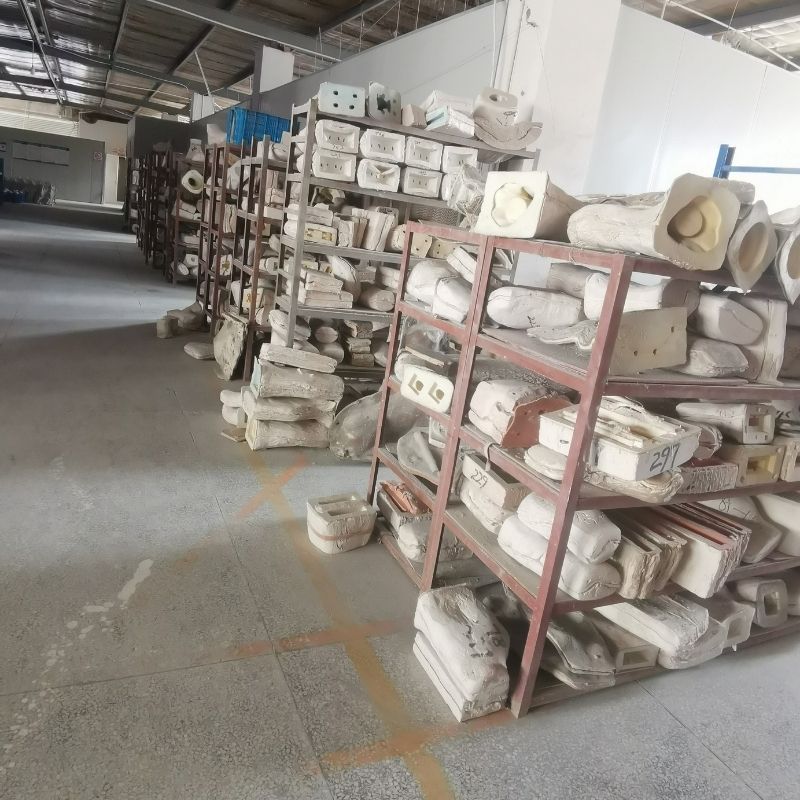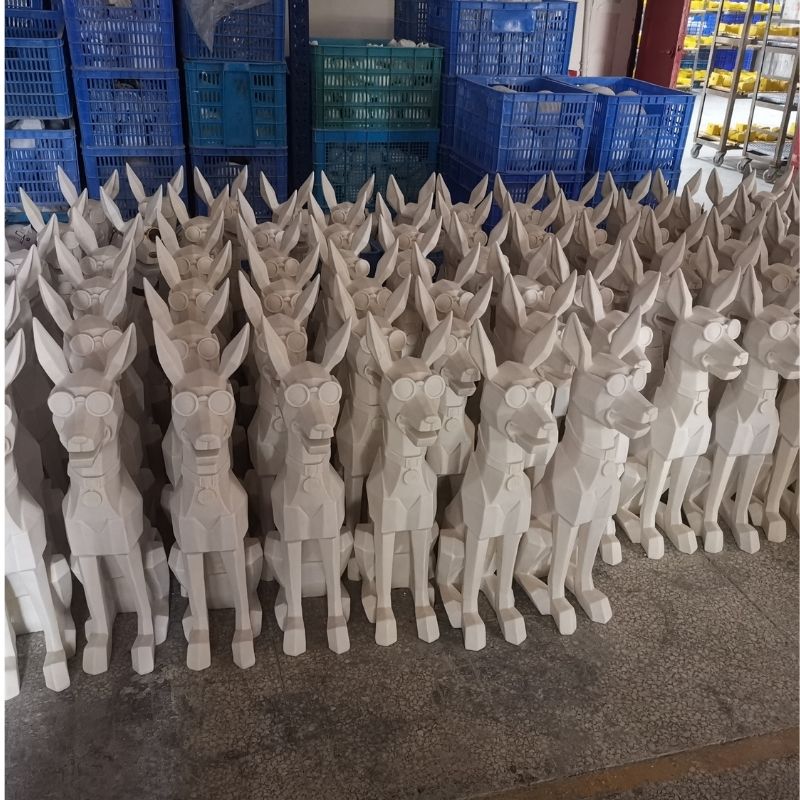I mentioned the resin sculpture make process shortly in my previous articles about mold and casting, then I received feedback from many business partners who think the production is very simple. So, I decide to write long and detailed information today.
1. Mold Making
Mold making is a very important step to decide the final sculpture’s quality. If the mold is not made properly, following production processes will affect it greatly. For example, bubbles or unevenness problems may happen in the casting process, leading to sculptures with uneven surfaces or internal defects, then needs lots of labor work to fix in the polishing process.
Our factory uses 3D printing sculpture models to make mold. 3D printing offers many benefits, such as high speed, high precision, and reproducibility, the only thing needs business partner do is offer a well-designed 3D product file. We will select the suitable mold-making material based on the sculpture model’s shape and size, then proceed with molding designing and making.

2. Apply a Mold Release Agent
Applying a mold release agent is an essential step which is usually after mold making process. The purpose of this process is to prevent the resin from sticking to the mold in the casting process, in the meanwhile can ensure demold sculpture’s smooth surface with high quality.
3. Casting
First, unsaturated polyester resin, and hardener will be prorated according to proportion and stirred well. Second, pour the liquid resin into the mold slowly to avoid air bubbles and leaking casting. Please kindly note, control the necessary casting speed and angle can avoid uneven casting, leading to incomplete shapes and rough surfaces.
4. Vacuuming
After casting, put the entire mold into the vacuum room, and extract air to remove bubbles, ensuring a smooth surface for the resin sculpture.
5. Curing
The resin is the liquid or semi-solid state after casting into the mold. A curing process is needed to make the resin hard and solid. We use unsaturated polyester resin in our factory, which is cured by adding peroxide and undergoing thermal curing. In this curing method, the resin needs to be heated to a certain temperature to activate the peroxide to promote the curing process.
6. Demolding
Demolding is the step of removing the cured resin sculpture from the mold, remember to handle it carefully or it will hurt the sculpture’s surface.
7. Fixing(trimming, repairing, cleaning)
Fixing demold sculpture to ensure the final sculpture meet the requested quality and appearance standard. These processes cover trimming, repairing, cleaning, and such.
- The trimming purpose is to ensure the sculpture edges are even, smooth, burr-free, and without cracks.
- The repairing purpose is to ensure the sculpture surface is smooth, even, and bubble-free.
- The cleaning purpose is to ensure the sculpture surface is clean and perfect, making a good preparation for the following production process.
8. Polishing
Polishing is a surface treatment to improve sculpture surface gloss and smoothness. This process will use a series of abrasive discs or polishing fabrics to remove any unevenness, burrs, and defects. It requires the necessary pressure, speed, and control time well to avoid damaging the sculpture’s surface.
9. Watermilling
Watermilling is not a necessary production process, but it is done as needed. Usually, a watermill is performed to further improve the smoothness and quality of the sculpture surface, and to eliminate any polishing marks or other surface defects that may exist. Add a watermill production process to meet better product standards and VIP buyers who need the best of the best sculpture. The polishing process is enough no more watermilling in common sculpture production.
Watermills use water and sandpaper to sand the surface to make the sculpture surface smooth and remove remaining scratches or bulges from the polishing process.
10. Manual Grinding
Manual grinding is not a necessary production process. This process is typically used as a means to address surface defects or achieve higher precision when polishing and watermilling are insufficient.
Manual grinding is more focused on details while polishing and watermilling are mainly used for the overall surface. Finer grinding tools are usually required, which need to be carefully polished to achieve a higher level of craftsmanship. This process also can be used to correct irregular parts that are difficult to make improvements in the polishing and watermilling.
11. QC for Unpainted Sculpture
QC will check unpainted sculptures one by one to ensure that it has no defects or flaws. They also check the size, shape, weight, and other aspects to make sure they meet the requested production standards possible.

12. Surface Treatment
Surface treatment refers to the process of applying spray paint, electroplating, water transfer printing, resin drip painting, and such to unpainted sculpture. My previous article Home Decor Resin Sculpture Surface Treatment Guide covers some necessary knowledge.
13. Hand-painting
Hand-painting is not a necessary production process, and it is usually a personalized treatment based on the design and requirements of the sculpture to enhance its artistry and ornamental.
14. QC for Final Sculpture
Final sculpture quality inspection is a crucial step. The sculpture will return production line for repair or reproduction if find a quality issue in this process.
15. Packing
Packing final sculpture and ready to ship.


